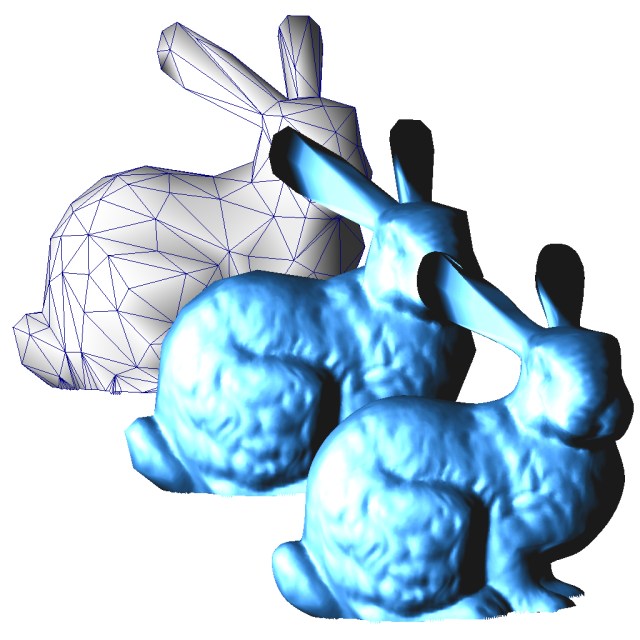 |

Submitted by , posted on 04 September 2003
|
 |

Image Description, by

This image demonstrates how to achieve dramatic mesh reduction while
preserving the visual appearance of objects using GPU programming.
The first image shows a 500 facets version of the well known Stanford
Bunny.
The second image shows a normal-mapped version. Note that the triangles are
still visible around the silhouette.
The third image shows a normal-mapped version, with Bezier triangles
generated by the GPU, using vertex shaders. Note the smooth silhouette.
The normal-map is generated using our LSCM parameterization method.
The Bezier triangles are generated using Vlachos's approach.
Credits:
Mesh decimation algorithm: Nicolas Ray
Bezier vertex shader: Wan Chiu Li
Biblio:
- Vlachos, Peters, Boyd, Mitchell, Curved PN Triangles,
ACM Symposium on Interactive 3D graphics, 2001
- Levy, Petitjean, Ray, Maillot, Least Squares Conformal Maps,
ACM Transactions on Graphics (SIGGRAPH), 2002
Links:
Publications and more details can be found in my home page:
http://www.loria.fr/~levy
|
|

